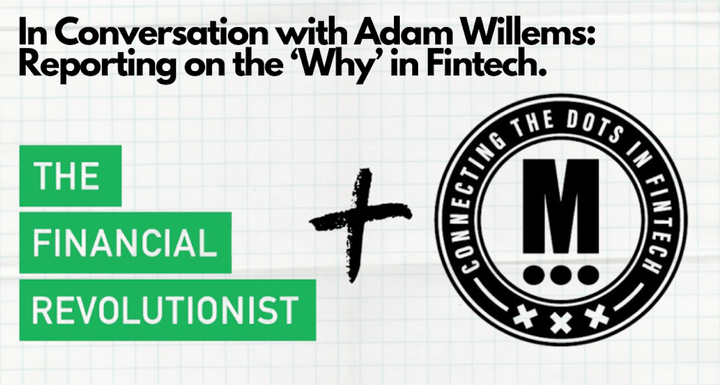The $8 billion Sam Bankman-Fried trial starts today - here’s what’s at stake
Just a year ago, Bankman-Fried occupied a $40 million penthouse in the Bahamas, overseeing a crypto empire then valued at a staggering $32 billion. Today, he is entwined in what the U.S. government deems one of the largest financial frauds in the nation's history

Just a year ago, Bankman-Fried occupied a $40 million penthouse in the Bahamas, overseeing a crypto empire then valued at a staggering $32 billion. Today, he is entwined in what the U.S. government deems one of the largest financial frauds in the nation's history, with his crypto ventures, including FTX and Alameda Research, having crumbled in a spectacular fashion.
Beginning Tuesday, the former titan faces the first of two trials, entailing a litany of criminal counts rooted in wire fraud, securities fraud, and money laundering, amongst other serious charges.
Allegations and Legal Tussles
The government alleges misappropriation of billions in customer funds for personal use and to mask bad bets, with over $200 million purportedly funneled into high-end Bahamian real estate and more than $100 million in campaign contributions for the 2022 midterm elections. A whopping $8 billion of customer funds are reportedly unaccounted for.
Bankman-Fried, maintaining a not guilty stance, finds himself potentially facing over a century in prison if convicted on all counts.
The Trials Ahead
As jury selection commences, the trial is slated to span six weeks, with four devoted to the prosecution laying out its case. Although it remains unclear whether Bankman-Fried will testify, the witness list includes close allies and former top deputies from his collapsed crypto empire.
Cooperating witnesses, including Bankman-Fried’s ex-girlfriend and former Alameda CEO, Caroline Ellison, and his erstwhile best friend, Gary Wang, co-founder of FTX, could provide pivotal testimonies. Both have been collaborating with the U.S. attorney’s office following guilty pleas in December.
An Empire Built on Ambitious Ground
Bankman-Fried, an ex-Jane Street Capital quant trader, catapulted himself into prominence via a lucrative bitcoin arbitrage trade, capitalizing on a substantial price differential between exchanges, most notably in South Korea – a phenomenon known as the "Kimchi Premium."
The success with arbitrage led to the establishment of Alameda Research and subsequently, in collaboration with Gary Wang and Nishad Singh, the founding of FTX in April 2019. The ventures saw astronomical success, spiraling Bankman-Fried’s personal wealth to approximately $26 billion at its zenith.
From Pinnacle to Precipice
Despite the outward semblance of invincibility and affluence, with Bankman-Fried even mulling over the potential acquisition of banking giant Goldman Sachs, the empire he constructed was concealing precarious vulnerabilities. The mask slipped amidst a sector-wide cryptocurrency plummet in 2022, revealing that funds from FTX were allegedly being siphoned to shore up failing digital asset firms and meet debt obligations.
The empire crumbled, and bankruptcy ensued, with federal regulators accusing Bankman-Fried of systemic fraud “from the start.”
A Case That Could Reshape Fintech’s Landscape
The outcome of this monumental case could reverberate profoundly within the fintech and crypto arenas, potentially informing regulatory stances and shaping legislative developments in the sector. With federal agencies scrutinizing Bankman-Fried’s dealings and the intricate web that interwove FTX and Alameda Research, the trials promise to unveil further startling insights into the cataclysmic downfall of one of fintech’s most luminary figures.
While the legal proceedings unfold, the fintech world watches, understanding that the conclusion of Sam Bankman-Fried’s trials may well herald a new era for the regulation and oversight of financial technologies and digital assets.
The Tale of Alameda Research and FTX
In an atmosphere replete with risk, venture, and inevitable mishaps, the fall of Alameda Research, a once-potent crypto hedge fund, and FTX, its connected cryptocurrency exchange, is both a stark revelation and a warning siren across the financial technology landscape.
Despite the aura of profitability orchestrated by FTX leaders, Alameda's financial dealings were far from triumphant. The fund reportedly hemorrhaged over $3.7 billion throughout its existence, with its losses and questionable lending structures playing a pivotal role in the eventual downfall of FTX, a previously soaring crypto exchange.
In a twist of controversial financial maneuvers, Alameda not only adopted a reckless approach towards its customer funds but also embarked on an aggressive borrowing spree from various lenders, including Voyager Digital and BlockFi Lending. Both lenders, significantly entwined in the crypto web, found themselves spiraling into Chapter 11 bankruptcy in 2022, becoming acquisition targets for the embattled FTX.
The hedge fund strategically secured its loans using FTT tokens, a currency minted by FTX, maintaining a tight grip on the vast majority of the token supply, which consequently held a minimum amount in actual circulation. In a contentious move highlighted by the Commodity Futures Trading Commission (CFTC), Alameda allegedly marked its massive stash of FTT tokens at the prevailing market price, despite the inevitability that any attempt to sell them en masse would drastically tank their value, given the fund's dominative control over the available supply.
Complicating matters further, a pivotal moment in the saga unfolded in May 2022 with the crash of Luna, a stablecoin, unleashing a cascade of financial chaos that ensnared lenders and crypto entities, sending ripples through cryptocurrency prices and instigating the bankruptcies of major Alameda lenders.
In a shroud of secrecy that bypassed investors and regulators alike, Alameda found itself in a precarious position, lacking the liquid assets necessary to meet its ballooning loan obligations. Nonetheless, FTX customers were continually reassured of the safety of their investments and the supposed financial invincibility of the exchange.
Sam Bankman-Fried, the prodigy behind Alameda and FTX, attempted to fabricate a semblance of separation between the entities, albeit maintaining a surreptitious grip on the fund, as asserted by CFTC regulators. While Alameda leaned heavily on FTX credit and customer funds, the financial structure began to crumble under the weight of its undisclosed dealings, which by mid-2022 saw the fund owing approximately $8 billion to unwitting FTX customers.
The first public inkling of Alameda's precarious financial state emerged in November 2022 when CoinDesk revealed a balance sheet depicting $14.6 billion in assets, of which over $7 billion were entwined in FTT tokens and Bankman-Fried-backed coins like Solana and Serum. Panic ensued, leading investors to liquidate FTT tokens and withdraw holdings from FTX, creating a cataclysmic scenario for Bankman-Fried and the entities he controlled.
In a sequence of events that mirrored a digital bank run, FTX witnessed an erosion of trust and financial solidity. Bankman-Fried's attempts to secure a rescue package from external investors fell flat, and FTT’s price plunged by over 75%. A temporary glimmer of hope manifested in the form of a non-binding acquisition offer from Binance's founder, Changpeng "CZ" Zhao, but this flicker was extinguished as Binance retracted the offer amidst revelations of mismanaged customer funds and ensuing federal investigations.
FTX declared bankruptcy on November 11, 2022, and just a month later, Bankman-Fried faced arrest, charged with fraud, conspiracy, and money laundering. The unraveling of these crypto entities leaves a haunting question in its wake: how many other crypto giants are precariously teetering on a similar brink?
Alameda and FTX's demise showcases the pressing need for regulatory frameworks and transparency in the fintech and crypto sectors, urging investors to tread with caution in a realm where digital assets can swiftly evaporate into the virtual ether.





Comments ()